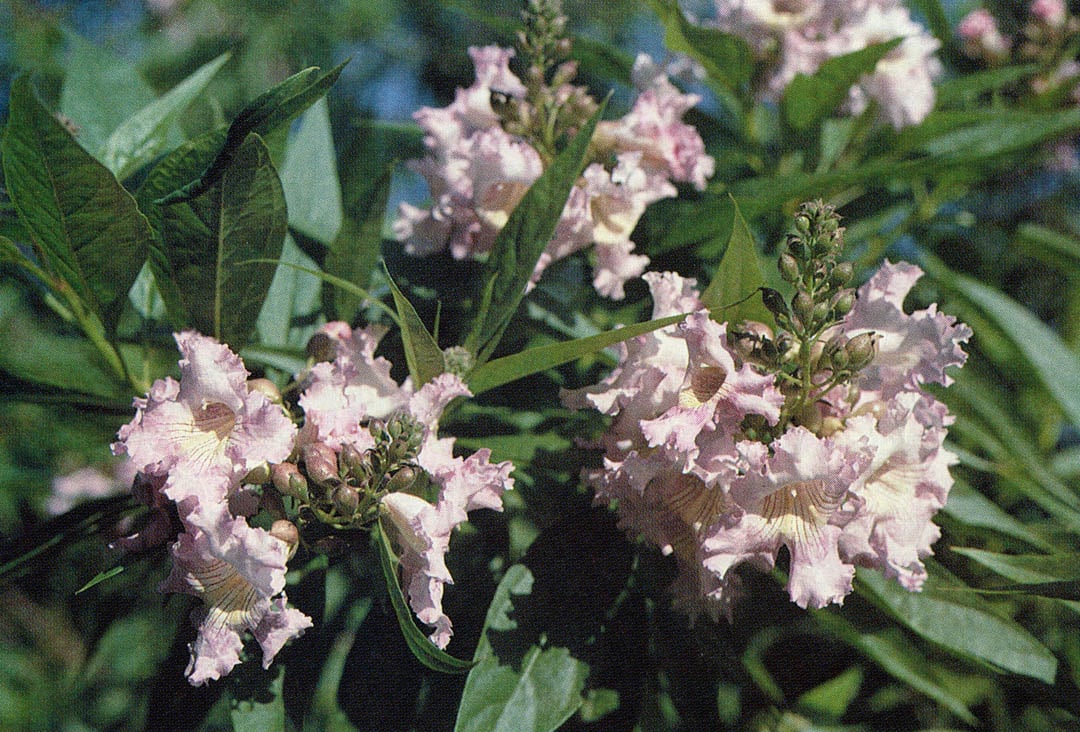

Contributor
- Topics: Archive, Plants You Need
Chitalpa tashkentensis ‘Pink Dawn’. Author’s photographs
The desert willow (Chilopsis linearis) from the desert washes of the American Southwest, and the southern catalpa (Catalpa bignonioides), from the southeastern United States, were brought together in the central Asian Republic of Uzbekistan in the Soviet Union in the early 1960s. From this unlikely event came one of the most exciting drought-tolerant woody plants for arid and semi-arid regions of the world.
Chitalpas are strikingly attractive small to medium-sized ornamental trees that have inherited the best features of both parents — the desert willow (Chilopsis linearis) and the catalpa (Catalpa bignonioides) — and are ideally suited for most of the soils and climates of the American Southwest. Among the better features of these plants are abundant trusses of fifteen to forty large flowers ranging from white to pink. Each flower is about an inch long, with a descending funnel-shaped throat, spreading petal lobes, and conspicuous purplish nectar guides on the inside of the flower. In southern California they begin to flower in mid to late May, after ...
READ THE WHOLE STORY
Join now to access new headline articles, archives back to 1977, and so much more.
Enjoy this article for FREE:
Articles: Calochortophilia: A Californian’s Love Affair with a Genus by Katherine Renz
If you are already a member, please log in using the form below.
Share:
Social Media
Garden Futurist Podcast
Most Popular
Videos
Topics
Related Posts

Ground Up Science for Greener Cities with Garden Futurist Dr. Alessandro Ossola
Spring 2023 Listen to the Podcast here. Alessandro Ossola is a scientist who gets very excited about the challenge of climate change allowing for an

Readying Urban Forests for Climate Realities with Garden Futurist Dr. Greg McPherson
Winter 2023 Listen to the Podcast here. “Going from the mow and blow to a more horticulturally knowledgeable approach to maintaining the landscape. And that

Welcome, Greywater, to the Garden
Summer 2022 Oh, summer: delightful warm air, tomatoes swelling on the vine, fragrant blooms on an evening stroll. When it’s warm and rainless, how is

Big Tree-Data and Big-Tree Data with Garden Futurist Matt Ritter
Summer 2022 Listen to the full Garden Futurist: Episode XV podcast here. We are in an environmental crisis right now in many parts of California










